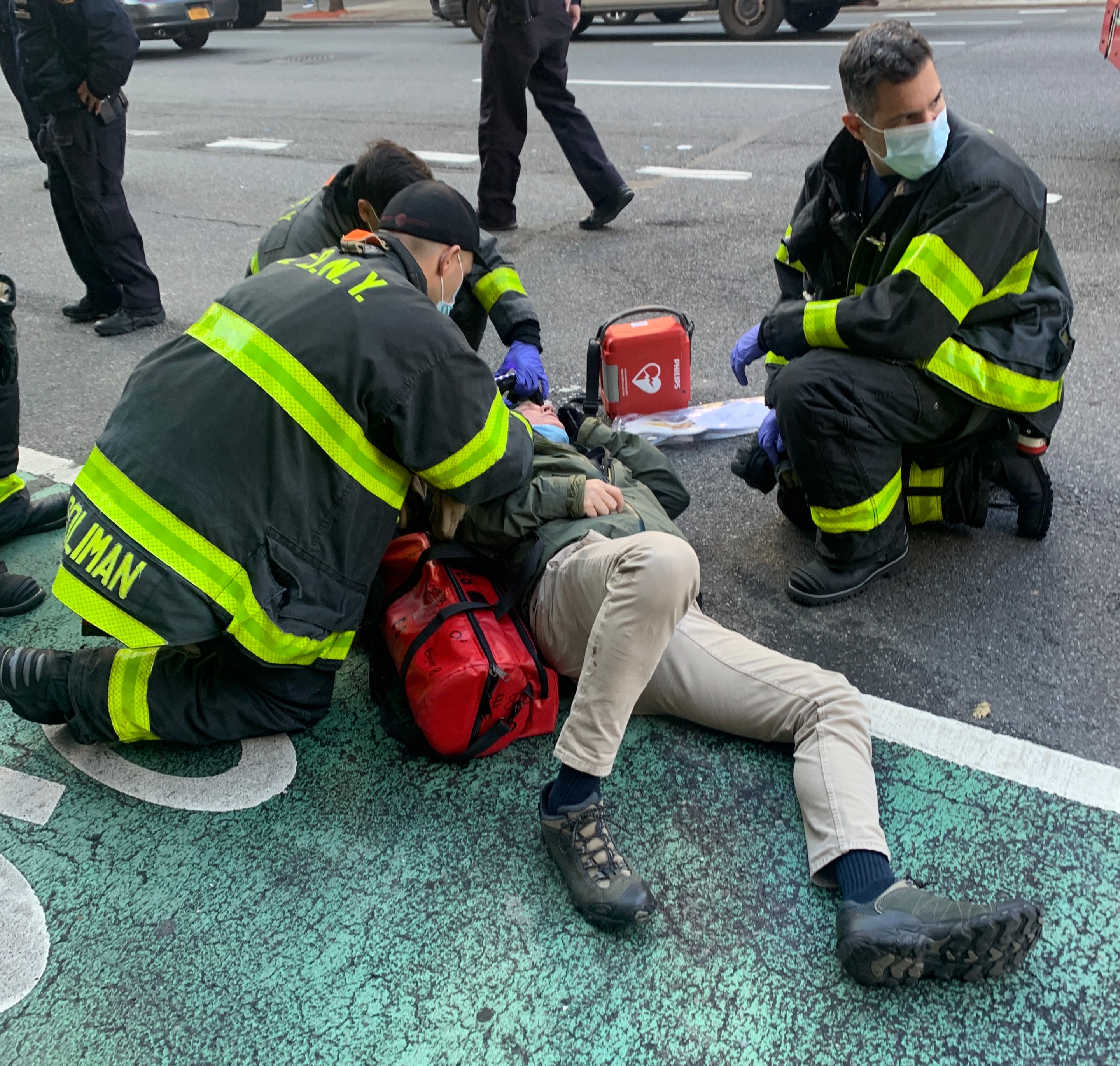Every October, I get itchy. The air loosens, the light turns golden — and I begin to question life in the city all over again. Several years ago on a crisp, October day, I was hit by a car driver while on my way to a yoga class in my Brooklyn neighborhood. As I stepped into a crosswalk, I noted that a moving car intended to turn left onto the same street yet had slowed, acknowledging me. I walked ahead and, enjoying a glorious sky above 15th Street that stretched all the way to the Hudson River, slowed my stride by just a fraction. And the driver expected something else. He never stopped; he kept moving, a hair faster than I walked.

My ear felt it first: a mass of metal crashing into my body, into this frame. Everything changed for me that day. The way I walk, the way I think about cars and drivers, the way I move about the world.
In New York City, drivers and pedestrians operate within a code. Let the pedestrian pass, but only if absolutely necessary — and only apparently if there’s a baby involved, or an aggressive walker who really does not look as if he is going to yield. Look out, and nobody will get hurt. Drivers are the bullies in this game, pedestrians the enabling middle schoolers without power of their own.
For a brief moment on that October day, I forgot. I let myself enjoy a moment of relaxation under the morning sun, and I allowed myself to think that the driver agreed with me; that he would allow me to stroll as I liked. He and I misjudged one another, and he crashed his car into me. The force of his bumper on my left knee immediately took me up, up into the air, but the shock of that moment, of the breach of contract between pedestrian and driver, caused the lingering pain.
When I imagine the crash now, I see a woman in her late 40s on her way to yoga class, suddenly lifted like an ice dancer above the ice, so eager to please her judges, to get this right, that she performs a nearly impossible twist, wrapping her own arms around her middle and pulling her legs up until they are tucked, infant-like, beneath her while traveling through the air and swiftly landing on her right hip in a curling thud. If there were a crowd, it would watch and wait, breathless, for the Rav-4 to screech to a halt at the moment of impact, a centimeter from this graceful heap.
But there was no crowd and no applause. There was only a driver and a body on the pavement, for several seconds unable to comprehend what had just happened. Then the screaming. I screamed and screamed, realizing I was alive, quickly aware that my head was intact. It took a moment or two to feel the pain. I screamed anyway, shock and anger tumbling through as I grasped breath after breath. Days later, a man told me he heard someone on that street yelling over and over, “You hit me! You hit me! I can’t believe you hit me!”
When pain shot through my limbs, I knew I would be all right. I could feel, I could see the vast sky above me, I could close my eyes and open them to this same scene: Cops peering down on me, concerned neighbors shuffling to my left, the terrified driver on one knee, whispering into my right ear, “I am so sorry…” A week later, he sent a pink notecard through the mail: “I am so sorry for what happened to you…”
For what happened to you.
The sting of this preposterous communication is possibly the most lasting trauma of the whole experience. I held the letter in shaking hands and read it over and over. The absurdity of this guy, perhaps coached by his lawyer or his wife to carefully choose the stationery and use his own, gentle handwriting, and most of all to take special care with the language of his note, troubles me still, and how could it not? He was showing some concern, but while taking no responsibility or even admitting agency. That’s what culture is, a normalization. But there is nothing normal about any of this except a woman slowing down as she walked in a crosswalk on a beautiful day.
I did some research and discovered that 108 people were injured in 519 reported crashes on the same day as I was, Oct. 24, 2015. In a public database, that crisp fall day was simply normal — just another day in a year when 51,356 people were injured in 217,658 reported crashes. That averages out to 140 people injured in 596 reported crashes on the average day — one crash every two minutes.
Weeks later I was able to read the police report, which states that I, the victim, “seemed to stop in the street.” There was nothing about how the driver kept moving, as New Yorkers do according to the code of the city. The police report blamed the victim: I caused my own pain. Innate to this is an understanding, a normalizing, an acceptance that people behind the wheels of cars don’t have the utmost responsibility to simply slow down and prevent crashes.
Pedestrians learn this in New York: look both ways, but more than that, keep an eye out for bad behavior, for anyone doing the wrong thing, because the pedestrian, the human being with nothing covering her but her coat, will pay. Automobiles are moving boxes of metal that generally protect whoever is inside. The fact that many, many drivers are moving too fast, are looking at phones and arguing with passengers, are usually unafraid to do as they wish, leaves pedestrians without protection. The vulnerability of the walker is an afterthought in the current system of city life. Struck pedestrians are left to think, “I ought to have expected this. How dare I relax while crossing a city street?”
Is it any wonder that since that day, I have struggled to cross any street without fear? I notice myself wince whenever a moving car comes within a few feet. When I hear an ambulance blare, I close my eyes and I am back in that crosswalk. And of course I marvel ruefully at what could have been. I had managed to save my organs, and my knees and right hip eventually healed, after years of therapy and acupuncture and simply waiting. I have waited for the bruises to fade (I had a hematoma that remained for years) and for the fear to lessen. There is a lump at the point of impact, ever reminding me to watch out. And there is a cynicism I carry about drivers. I am waiting for drivers to do better.
Alexandra Beers is a Brooklyn writer and teacher.






